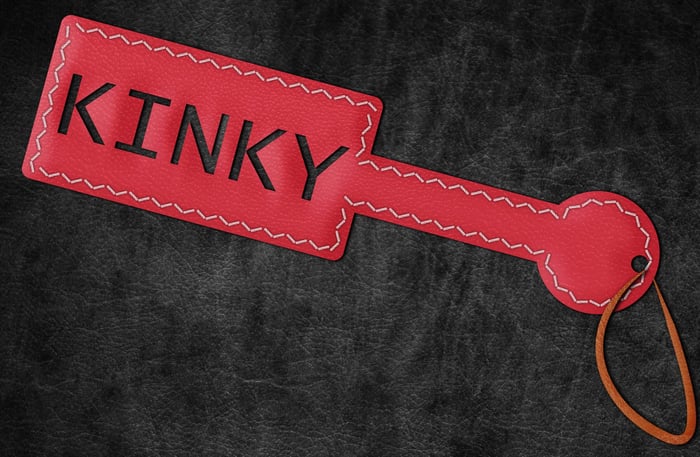
A Beginner's Guide to Paddles and Spanking
Jump To Section
A Brief History of Paddling
This guide to paddles covers everything a beginner needs to know about safe, consensual spanking and impact play to start with the history of paddling Like a lot of BDSM toys, the paddle that we use now has a horrible history with it originating in the slave trade as a way punish, discipline and control the slaves. It was used as it was a harsh punishment but wouldn’t irreparably leave damage, as such was more often used on women and child slaves.
From there is trickled down into the schooling system as a way to control and punish children. This barbaric use has now been outlawed in most of the western world. The BDSM community has taken ownership of paddles and they are a part of most player's play kits.
What Are Paddles Made From?
In this guide to paddles, we’ll explore the different materials used to create unique sensations; Paddles can be made of many things including, but not limited too, wood, metal, hard plastic, rubber and leather. In most sex stores you can find an interesting array of different paddles all with different textures. Here you can see an example of a few.

Types of Paddles:
1. Wooden Paddles
A simple wooden paddle, this type has a large surface area and flat surface, this will leave a stingy feeling when used.
2. Leather Paddles with Studs
Paddles like this will have leather on the outside and layers inside including something rigid as a core to give it some strength; this could be a metal core, plastic, wood or cardboard. One side has protruding studs that will leave indentations, marks or make somebody bleed when used hard enough. It is not made for the purpose of making somebody bleed through, it is just meant to be a different sensory experience.
3. Cut-Out Paddles
This is a type of cut out paddle, these cut outs can be in leather, like here, wood or rubber too. They look good and for some can leave a mark with the word that is cut out on the skin.

How To Safely Paddle Someone
No guide to paddles would be complete without discussing safety and consent during impact play. All paddles are made with different sensations and textures in mind. I personally own one that is made of solid metal and then another wooden one that has soft fur on one side. 3 completely different feels, metal, wood and fur; but all equally as fun.
Where to Paddle: The Basics
You can use a paddle on a few areas of the body, I have made a quick Green (Yes) Red (No) Orange (maybe) picture for basics. There are finer details once you get more experienced but for now these are the areas.
What you are aiming for are areas with big muscle surfaces. What we aren’t looking for are areas with major organs. Yes, you are hitting outside the body, but, if you hit hard enough on areas with major organs you can cause a lot of issues especially down the road after years of it happening. When ever you are playing safety is paramount, protect your bottom by aiming for the green areas. The other thing you need to remember with paddles, particularly paddles that are hard.

Impact Play No Go Zones
As this guide to paddles explains, it’s crucial to avoid certain parts of the body to ensure a safe experience. When an immovable object meets an unstoppable force; disasters can happen. What I mean by this is if a wooden paddle (unstoppable force) is swung and meets, let’s say somebodies spine (immovable object) then you could fracture, break, disable or kill that person. Bones can not move like skin, fat and muscle does to absorb the impact. Bones break. Like hitting a brick wall with a brick, sooner or later one or both will sustain damage.
So it is best to stick to the green areas. Orange areas are orange because you sometimes can and sometimes can’t. For example somebody with ample breast tissue would be able to handle a few hits from a paddle as long as the paddle doesn’t deviate from the breast on to the chest plate. A flatter chest doesn’t have this cushioning; so, I would advise against it. The other thing to take into account is what the paddle is made out of a floppy leather paddle would be fine to use, but a hard wooden one risks hurting the receiver.

How to Store and Care for Paddles
Storage is pretty easy with these guys, as long as they aren’t in moisture where mould could grow on them; they’re pretty happy. I have some that I keep in draws and others I keep hung by the string or loop on the handle. Care is very similar they generally just need a wipe down and they’re fine. If you are using them with more than one person you will need to use alcohol to wipe them down between people and this can over time affect the leather or lacquer on the wood.
Cleaning and Maintenance Tips
I would recommend a leather conditioner for the leather paddles and a sanding and re-varnishing for the wood when needed. Please also remember that if you use a paddle until blood is drawn, that paddle can not be cleaned 100% again. There are so many little grooves and areas for the blood to get into. Do not use a paddle that has blood on it with a different bottom.
Final Thoughts: Explore and Enjoy
I hope you enjoy paddles as much as I do. If you would like to look at some of the paddles we have available or head into store and have a look around. We hope this guide to paddles helped you feel more confident exploring this exciting form of BDSM play
FAQs
What is a paddle used for in BDSM?
A paddle is a type of impact play tool used to create physical sensations, from light taps to more intense smacks, during consensual BDSM scenes. They can enhance pleasure, build erotic tension, or serve as part of power exchange dynamics.
Are paddles safe for beginners?
Yes, paddles can be safe for beginners when used properly. Always aim for well-cushioned, muscular areas like the buttocks or thighs, start light, and communicate with your partner throughout. Avoid the spine, kidneys, or joints.
What materials are best for a beginner paddle?
Soft leather, rubber, or silicone paddles are great for beginners. These materials offer flexibility and gentler impact. Avoid heavy wooden or metal paddles until you have more experience and a clear understanding of how to control your swing.
Where on the body is it safe to use a paddle?
Safe zones generally include the buttocks, thighs, and the outer parts of the hips. Areas to avoid include the lower back (kidneys), spine, joints, and anywhere over bone. Refer to green/yellow/red zone diagrams for guidance.
How should I clean and store my paddle?
Wipe your paddle down after use with a damp cloth or an alcohol wipe. If you use it on multiple partners, disinfect it between uses. Store your paddle in a dry area away from moisture. Leather paddles benefit from occasional leather conditioner, while wooden paddles may need re-varnishing over time.
What is the difference between paddles and other impact toys?
Paddles have a flat, broad surface and provide a thuddy or stingy impact depending on the material. In contrast, crops or canes tend to have a smaller surface area and deliver a sharper, stingier sensation. Paddles are great for more diffuse impact and easier control, making them ideal for beginners.









